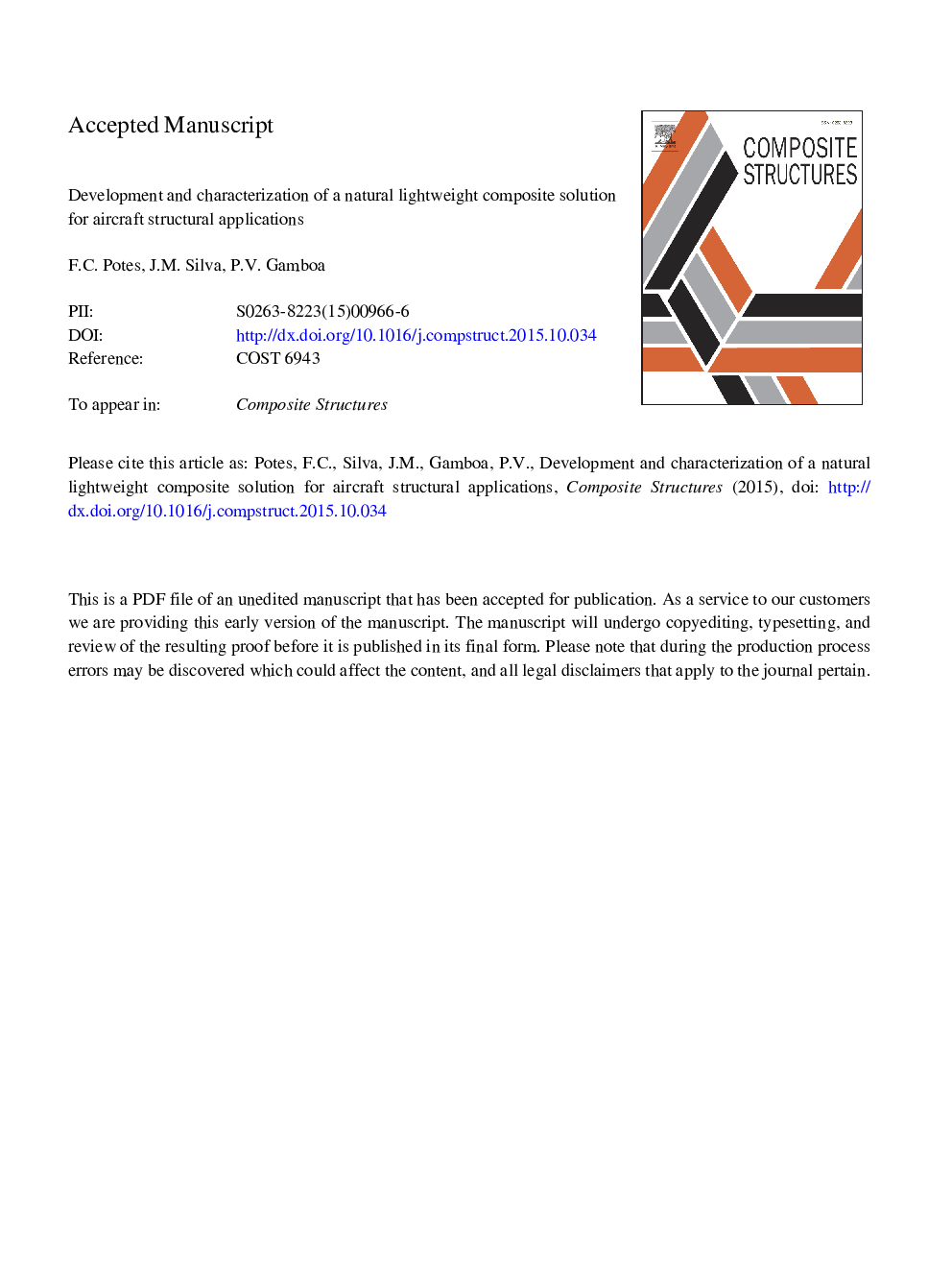| Article ID | Journal | Published Year | Pages | File Type |
|---|---|---|---|---|
| 6706386 | Composite Structures | 2016 | 53 Pages |
Abstract
Sandwich-based structures play a major role in several transport applications due to their high stiffness and strength-to-weight ratios. Some properties of cork agglomerates suggest that this natural material may represent an excellent candidate when implemented as the core of sandwich components such as the ones typically adopted in aircraft interiors. However, one major drawback still resides in their higher density values in comparison to other lightweight benchmark materials. In order to address this issue, a perforated structural concept is herein presented for the cork agglomerate core as part of a weight minimization strategy. The aim of this investigation consists in assessing the influence of several core design variables, including the cells' geometry, perforation ratio and pattern, with regard to the impact on the components' overall mechanical stiffness and damping performance. The design process was supported by numerical simulations carried out with the ABAQUS® FEM tool and validated via experimental testing characterization. Results showed that distinct optimized cellular topologies can be derived with improved properties tailored for the functional requirements of specific components, thus confirming the validity of such cork-based composites in aircraft structural applications.
Related Topics
Physical Sciences and Engineering
Engineering
Civil and Structural Engineering
Authors
F.C. Potes, J.M. Silva, P.V. Gamboa,
